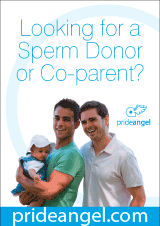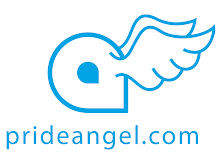Friday, 1 November 2013
Deciding upon Donor Conception: The Future of the Child
The decision to have a child is one of the most important decisions you will ever make. Having a child is a strong desire for most individuals, although some are unfortunately unable to do so on their own. If that is the case for you, then donor conception might be a concept that you have thought about or that you are highly considering. If so, you might be wondering how donor conception could affect your child later in life. This article will discuss some of the effects that donor conception might have on a child, as well as tips on how to prepare yourself for explaining donor conception to your child.
What is donor conception?
Donor conception is the use of donated sperm, embryos, or eggs in order to conceive a child. Common forms of donor conception include surrogacy, in vitro fertilization, and sperm donation. A surrogate mother is often used when a female cannot carry to term her own child, and she wants to have a child with her own genetics. In vitro fertilization occurs when the male’s sperm is not able to conceive a child; therefore the female is injected with the sperm of a donor. And lastly, sperm donation is also common among lesbian couples and single women who do not have a partner and would like to have a child.
How will it affect my child?
If you are planning to use donor conception, there are a few questions you will need to ask yourself beforehand, such as the following: Who will tell my child that they are a “donor” child? Will I share that information with family and friends or simply keep it private? How can I prepare myself to explain the situation to my child properly? Will I be open from the start with my child? There are many questions, but answering these few beforehand will prepare you for the process, as well as help you to make the decision in a more educated way.
Another aspect to consider when considering donor conception is whether or not your child will want to know about his/her donor. If the child does want to know about the donor, it is important that you understand the process of recovering that information. When your child is 18, they will have access to the donor registry with information about their donor, as well as information about any donor siblings. This information is stored by HFEA, the Human Fertilization and Embryology Authority. The information is separated into two categories: non identifying information and identifying information. Non identifying information will include the physical appearance, number of children, and ethnic group of that donor while the identifying information will include the last known address, name, and date of birth of the donor.
It is important that you are aware of this information and this process, and also that you receive counseling and guidance before making the decision to conceive by donor conception.
Article: 31st October 2013 by Tess Young
About the Author
Tess Young is a freelance writer and blogger. Some of the topics that she writes about include technology, home design, travel and health. She suggests looking at the information provided by California Cryobank regarding the effects of donor conception in order to learn more about the process.
Labels:
donor conception,
egg donation,
embryo donation,
ivf,
sperm donation,
surrogacy
Subscribe to:
Post Comments (Atom)



No comments:
Post a Comment